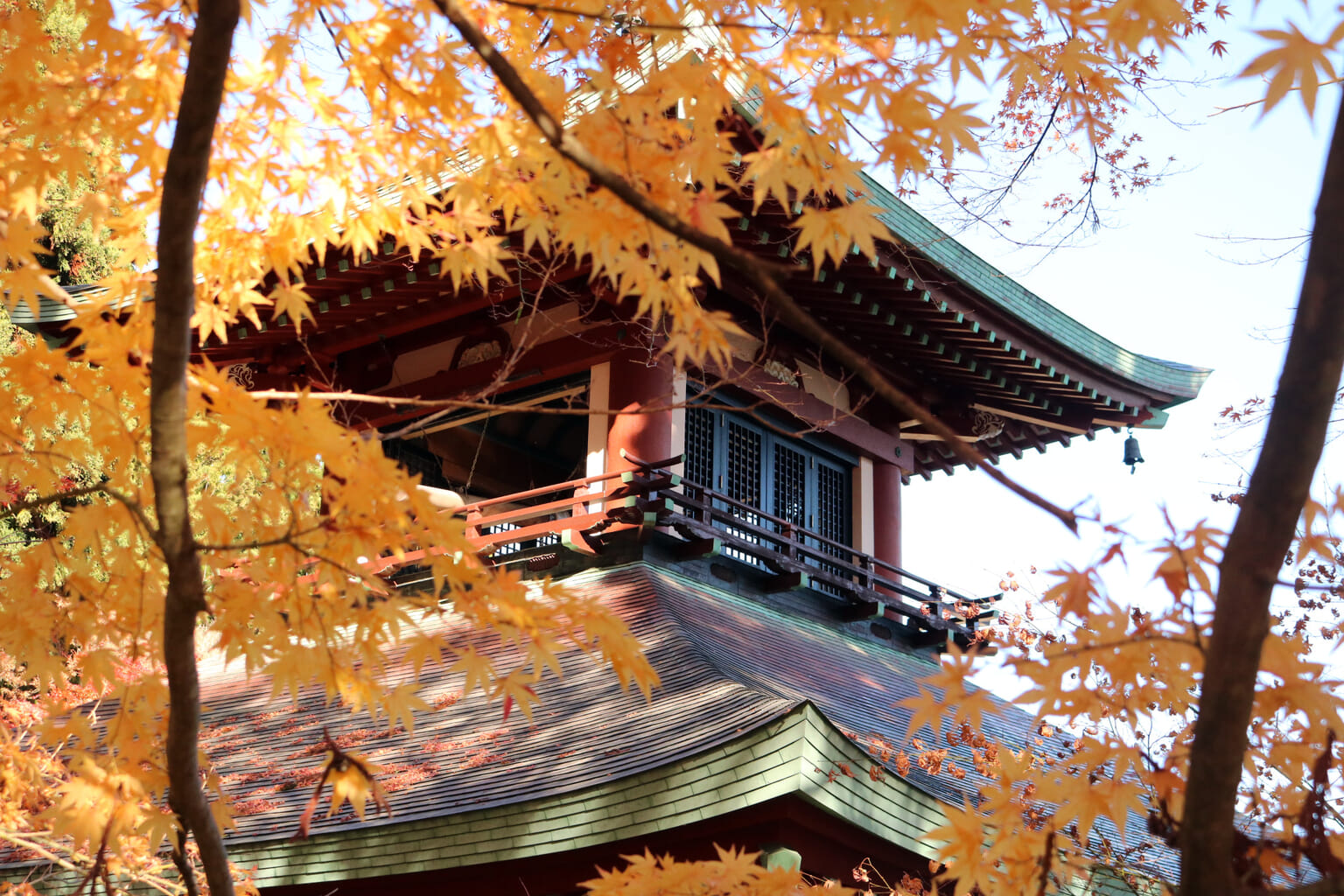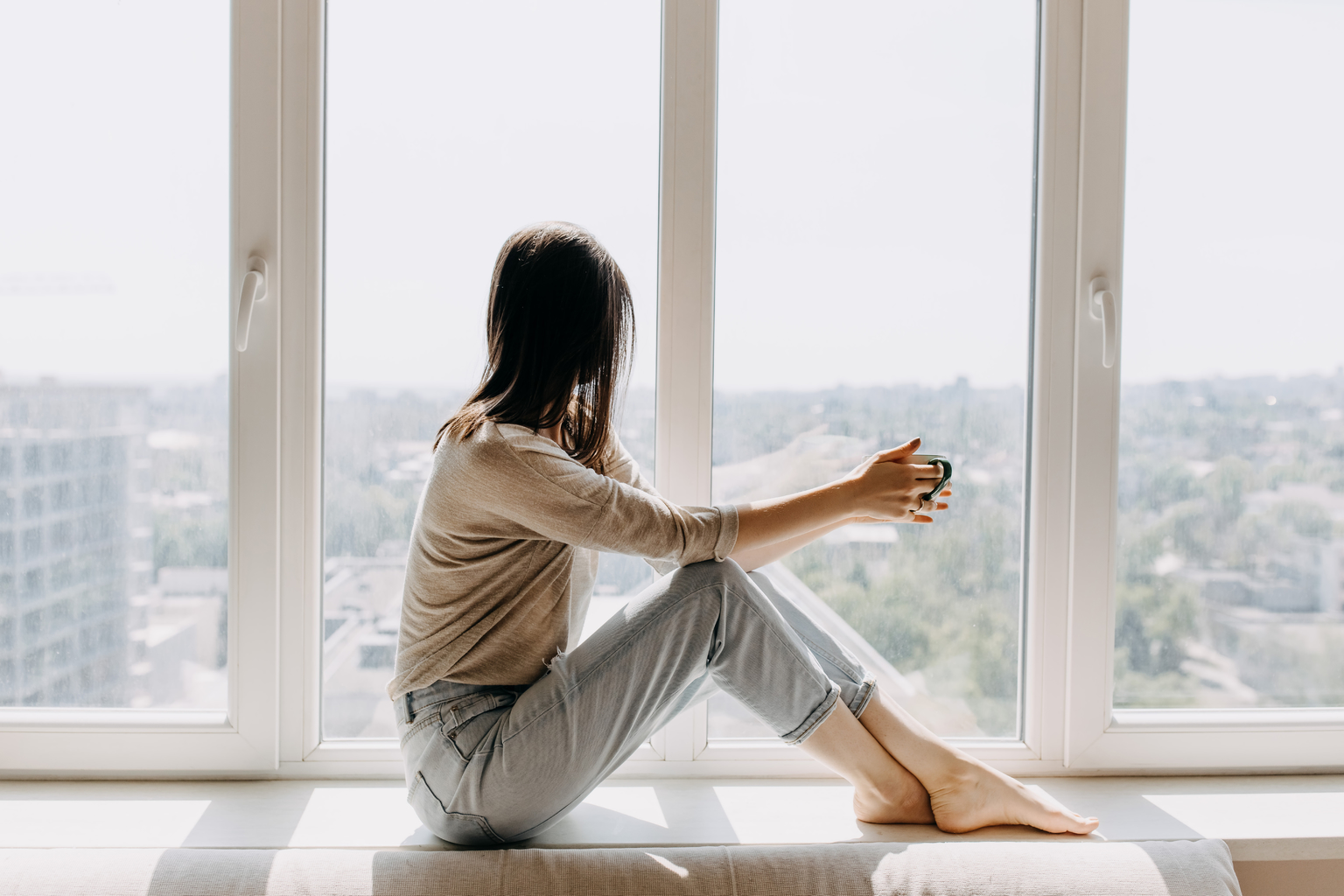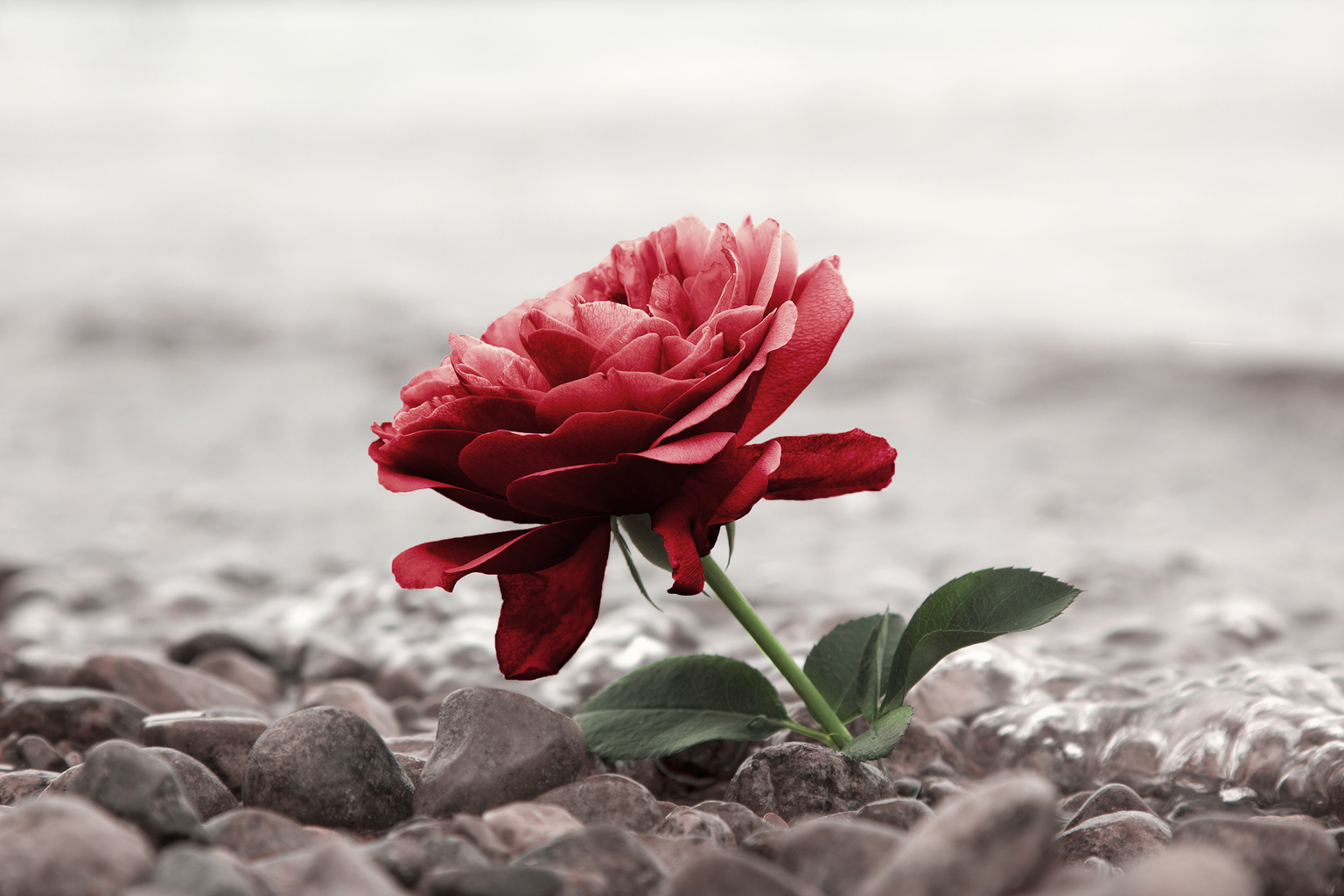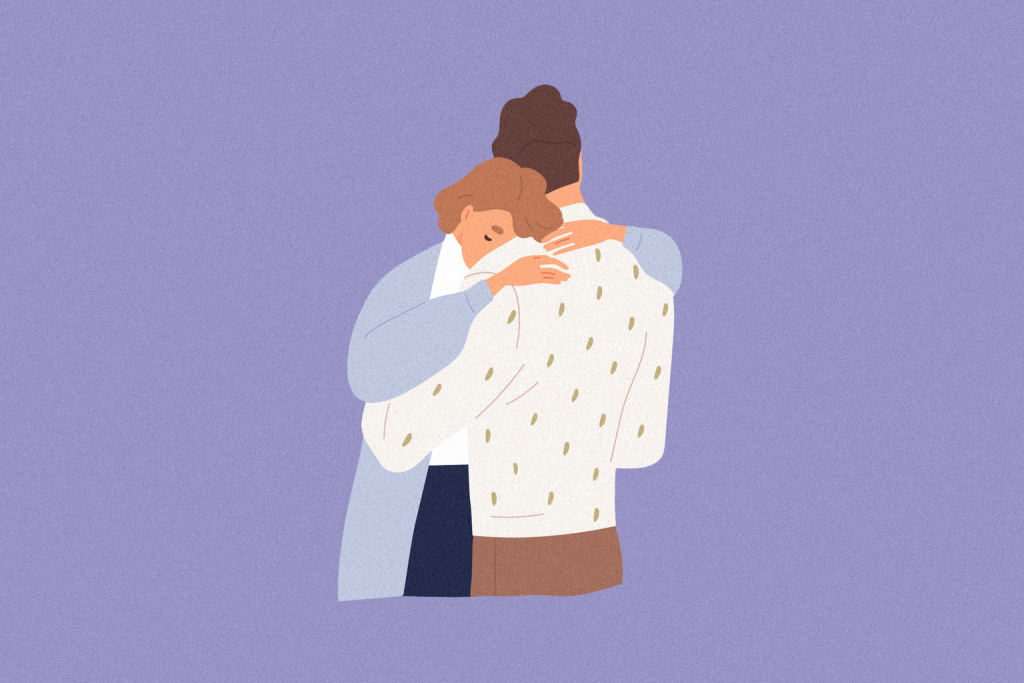Grief comes to all of us and leaves us transformed. Whether that change is good or bad is determined by how we process that loss, says grief educator Gretchen Miura. Here, she shares her experience and advice on how to do that successfully and discusses the online grief support community she has set up to help foreigners in Japan get to the place of greater connection and compassion that results from effectively working through grief.
What is grief?
Grief is a natural emotional response to a loss. While we tend to think of it as our reaction to the death of a loved one, it can be about any type of loss, including job loss, estrangement, cultural loss or divorce.
Grief is deeply personal and unpredictable, as it affects each of us in its own way. You may feel anger, guilt, jealousy, sadness, loneliness. Everyone experiences it differently, and that is why there is no right way to deal with grief. But what you can do is create the time and space to let grief in, and to let it work through you.
“It’s so hard to accept a loss,” Miura says. “We do mental gymnastics to try to wiggle our way out of it and tell ourselves it hasn’t happened, or that it can’t be right. But once you start to sit with it, and accept it, and be with it, then you can build a new relationship with the person you lost, you can share memories with other family members, or honor the deceased in a certain way,” she says.
This is Miura’s model of successfully processing a loss. It views grief as an ongoing process that allows you to integrate it into your life and carry it with you. It is very different from the concept particularly held in the West of grief being something that we “get over” and move on from. What it acknowledges is that, particularly in the case of grief over the death of a loved one, as long as you are alive, your relationship with that person — how you think and feel about them — is also alive.
Your experience of “the physical death of someone you love is something that will take on different forms and transform throughout your life and your relationship with that grief, with that loss. So, even if you lost somebody 30 years ago, you might, in Japan for example, light a candle for them, or share a story about them with a child because they are still part of your life. It doesn’t have to have a negative or heavy connotation — I’m grieving this person because I’m still thinking about them and celebrating them and loving them.”

Lighthouse Circle Grief Support Community
Miura lives in Akita Prefecture, where she helps run the family’s Zen Buddhist temple, Dairyuji. About a year ago, together with life coach Sarah Furuya, she started the Lighthouse Circle Grief Support Community, which is run online in English. The catalyst for that was the passing of a very close cousin a few years ago. He died in the US during the height of the Covid-19 pandemic. Miura could feel the pain of her aunt and family back home who couldn’t even hold a funeral for him. Meanwhile, those of us in Japan weren’t able to travel home to be with loved ones.
“I wanted to make sure that women and men in Japan have a place to go when they’re grieving. Because it’s very hard not to have a community to grieve with,” she explains. “I really wanted to make that support community.”
Miura is experienced in grief. She holds a grief educator’s certificate from America’s David Kessler, an expert on grief along with co-author of Elisabeth Kübler-Ross, who is renowned for her research that established the five stages of grief. Miura also applies her study of mindfulness meditation teaching to help students “sit with” and accept the emotions they experience in grief. She is practiced in the many death-related rituals of the temple — funerals, memorial services and periods like obon and ohigan.
While Miura emphasizes that there is no right or wrong way to grieve, she offers insight by sharing what has helped, and hindered, her in her lived experiences of loss.

The Harmful Effects of Unprocessed Grief
Miura first experienced deep grief aged five, when her beloved older brother died suddenly in a car accident at the age of 17. Despite the best intentions of her loving family and a supportive community, they assumed that she was too young to be able to comprehend what had happened, and they minimized her experience, she says.
“I was sort of told, ‘you don’t understand,’ ‘you’re resilient, you’ll pop back.’ So, I felt that my grief was never witnessed, never validated, and in fact I just sort of pushed it down. So, I grew up being profoundly impacted by this loss,” she explains.
“I just sort of carried this heaviness around and I felt very untethered. It was like a loneliness or isolation. So, even though I had sisters and parents who had experienced the same loss, it felt very isolating. In fact, I think we were all sort of in our own corners grieving separately. It was very fracturing.”
The first topic of the Lighthouse Circle is witnessing grief. It gives participants the opportunity to acknowledge their own grief and to share it with others. It is important, Miura says, “because we try to minimize our grief, or people minimize it for us, or try to put a silver lining on it. I want people to say, ‘This is hard,’ ‘I’m struggling,’ ‘I’m sad,’ or whatever they’re experiencing.”
For people who feel unable to share their grief, they can work through the course materials on their own.
It was only six years ago that Miura was able to acknowledge the grief from her brother’s passing, after decades of buying into the story pushed onto her that she had been too young to really remember her brother, or too young to grieve him. She was walking with her family through the Akita rice fields on their way to a local festival. Her son walked ahead of her, holding the hand of his adoring little sister. They were aged 17 and 5.
“Seeing them together, just walking between rice fields, I realized, ‘That love was real. I loved my brother and he loved me,’” Miura says.
Accessing that unprocessed grief was not easy, but it was worth it. It reconnected her to her brother and helped her feel more grounded and that she belongs. “It started to reconnect a lot of what had felt fractured inside me,” she says.

A Good Way to Grieve
If there were any such thing as a “correct” way to grieve, Miura has experienced that, too. When her cousin died in the US, it was just before obon, the Buddhist period of honoring the spirits of one’s ancestors. It is a busy time for a Buddhist temple, and she had put aside time to devote to it. As she performed temple tasks that included cleaning gravestones, she allowed herself to feel grief, and to let it work through her. She set up an altar for her cousin, and her husband recited Buddhist chants for him. “I was tending to my grief. I was making time for my grief,” she says.
Part of the significance of rituals related to death is that they give us the time and space to grieve. Since we cannot control grief and say, “Now I will grieve,” creating an opportunity for grief to come to us at a time when we are ready to accept — without judgement — what it brings us, is the best we can do. Sadness will come, anger may come, regret may come. By allowing it to be within us, we allow it to also leave us.
Although the experience of death is universal, rituals and customs related to it differ by culture. Even with a deep appreciation of Japanese funeral customs, their meaning and significance may not resonate with you, particularly when you are in real sorrow.
“Sometimes we do want the rituals of either our childhood or our native culture because the rituals transcend the mind. They go into a place that’s evoking something that’s comforting,” Miura says.
She experienced this following the suicide death of a friend’s husband. During the funeral service, even as her own husband chanted the sutras that she had studied, she felt like she just wanted to hear ‘Amazing Grace.’ “I just wanted to be in a church,” she says.

Miura’s husband doing motor cross this past October
Integrating Loss into Our Lives
The latter sections of the Lighthouse Circle grief course focus on how to redefine one’s relationship to a loss and integrate it into our lives. “It is little ways of staying connected to that person rather than pushing it away,” Miura says.
There is a lot of joy in the little things here, she says, giving the example of a friend who now enjoys watching the shopping channel on TV because her sister had and it makes her think of her when she does it. Reading a book that the person loved can be enough, but there is also room here for grander gestures, like that of her husband’s honoring of his brother’s life.
The brother loved motocross racing and even while sick with cancer last year, he organized a local race. Miura’s husband and sons helped him build the course because it was obviously meaningful to him. Lots of people showed up and it was a joyful event, Miura says. Ten days later, her brother-in-law passed away. This year, the event was held again, largely due to her husband’s efforts.
“He’s suffering so much. He misses his brother so much, but this is a way that he’s taking this loss and working it into his life and doing something that’s meaningful and that he can share with his sons, and share with his friends. It doesn’t take away the sadness but it is a way to integrate it into his life,” she explains.
The role of community in handling grief is very important to Miura. “Grief is very personal and people do often feel alone or isolated in that, and being part of a community doesn’t necessarily take away those feelings, but to be held in community and to hear other people can be quite powerful sometimes. There is a sense of connection of our humanness. The details might be different, but the feelings and the suffering and the emotions we go through often have many, many similarities and connections.”
For Miura, grieving is a process of creating connection, not only with the person you are grieving. “I do know people who, once they’ve experienced a loss, it changes them and they tend to be kinder and more compassionate and more tapped into this communal experience and a little bit more grateful sometimes for their own lives and the time they have,” she says.
“We cannot avoid loss,” adds Miura. It is part of being human. Accepting the idea of death and life as being two sides of the same coin is living your life more fully. We cannot have one without the other.








